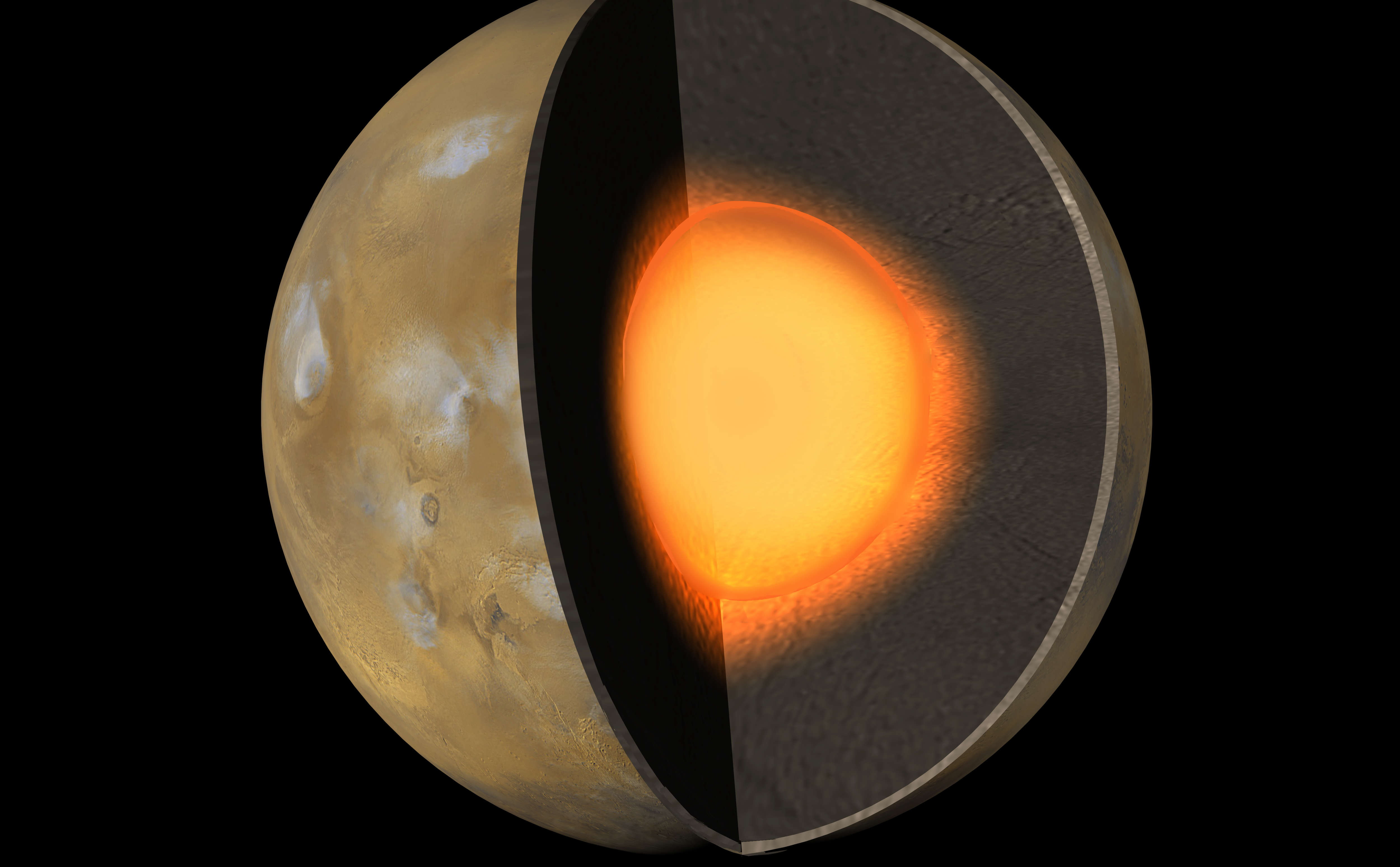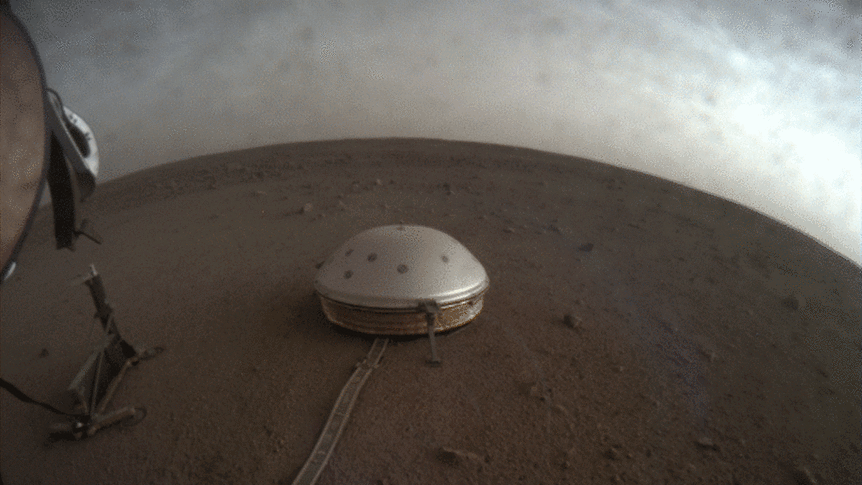Create a free profile to get unlimited access to exclusive videos, sweepstakes, and more!
Now we know what the guts of Mars look like

The reddish, radiation-blasted surface of Mars has become iconic after years of landers and rovers photographing it, and even taking selfies at some of its more intriguing locales. But what lies beneath that surface?
NASA's InSight might have been hanging out in the same place since 2018, but the lander that measures Marsquakes has now given us an idea of what is in the depths of the Red Planet. Its SEIS seismometer was able to figure out what the crustal subsurface, mantle, and core of Mars must be like, even though there is no camera that can actually image them (or the innards of Earth). Spoiler alert: the core is fiery and molten like the pits of Mordor.
What InSight found out was that Mars has a rather thin and layered crust. Under that lies a thick mantle and that literal hell of a core. The SEIS (Seismic Experiment for Interior Structure) data went into such depth that researchers actually published three studies in Science — one each for the crust, mantle and core — and a fourth that goes into the overall composition of Martian innards.
“Seismic waves are a great tool to tell you about the interior of a planet,” researcher Bridgitte Knapmeyer-Enddrun, who led the crust study, tells SYFY WIRE. “They travel through the planet and on their way from the source of the quake to the seismometer, where they are recorded, and pick up information on the materials they are traveling through."
SEIS can tell seismic events are happening up to thousands of miles away. Out of the 733 Marsquakes it has recorded so far, 35 of them provided enough data to come up with an idea of not just what happens inside Mars, but what actually exists beneath all that reddish dust. Techniques similar to this have been used on Earth. The type of material that waves travel through determines their velocity, which is one thing that told researchers what was in the subsurface, and there were also two types of seismic waves that SEIS picked up on.
Seismic waves known as P-waves and S-waves gave away things that otherwise couldn’t be seen. P-waves or compressional waves are primary, and also pressure waves, which shake the crust back and forth. They are the fastest waves that end up being what SEIS or any seismometer ”hears” first. S-waves or shear waves are the secondary kind, and shake the crust in a direction perpendicular to the one they are moving in. P-waves can zoom through the low resistance of liquids and gases, something S-waves are unable to do. P- and S-waves can be generated simultaneously. When they reach SEIS depends on what they travel through.
“We used this effect to detect individual layers within the crust and estimate their thicknesses,” Knapmeyer-Enddrun says. “Both P- and S-waves are radiated from the source, and the time difference between their arrivals gives an indication how far away this quake was.”
Mars is thought to have once been another Earth that might have even been teeming with life billions of years ago. Unlike the Martian core, Earth’s inner core is solid but surrounded by a molten mantle, which is sometimes aggravated by shifting tectonic plates that cause volcanoes to spew out lava. Mars once had volcanic activity (evidenced by the lava tubes that habitats may someday be built in) and seems dormant, though there may be eruptions we haven't caught yet. Another thing it is missing is a dynamo that creates a magnetic field, which could have saved it from morphing into a frozen desert.
Earth’s magnetic field originates from its fluid outer core. Interactions between the outer core, or dynamo, and the solid outer regions can tell us about our planet’s evolution. The liquid inner core of Mars could give us more understanding as to why it never formed a dynamo and therefore a magnetic field. Earth’s formation was chaotic because of an active mantle and plate tectonics. Mars is thought to have grown hotter as its insides separated into distinct layers, but stayed more stagnant.
“Mars has a thicker mantle than Earth, though on Earth, heat seeps through to the surface as tectonic plates move,” researcher Amir Khan, who co-led the mantle study, tells SYFY WIRE. “Even if the thickness of its mantle is similar to Earth’s, the physical makeup highly differs. Mars may have once had a dynamo powered by heat in its mantle, but that dynamo no longer exists.”
Looking deep inside Mars could eventually reveal more comparisons to our own planet, starting from when they both evolved in a massive cloud of gas and dust now known as the solar system. Maybe then we will know where its habitable ancient self took a wrong turn.



























